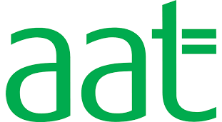At AMR Bookkeeping Solutions we are always looking for ways to help make things easier for our clients. Whether it’s providing advice about payroll, assisting you with auto enrolment or managing your VAT returns, we understand that sometimes the terminology associated with bookkeeping can be somewhat confusing.
Here, we’ve put together a list of the most common bookkeeping terms along with what they mean.
Accounts payable
The amount of money your company owes your creditors, e.g. suppliers, in return for any goods and services bought by the company.

Accounts receivable
The amount of money owed by customers or clients to your company after they have received your goods or services.
Auto enrolment
Auto enrolment refers to the government initiative which is aiming to help more people save for their retirement through a workplace pension scheme. It is compulsory for employers to automatically enrol any eligible personnel into a pension scheme and contribute towards it. You can find out more about this on our blog here.
Balance sheet
A financial statement listing a company’s assets, liabilities and owner or stockholder equity. A balance sheet will provide an insight into a company and its operations.
Bank reconciliation
The process of matching bank payments and deposits on a company’s bank statement with a company’s bookkeeping records.
Capital
This refers to a company’s financial assets or the value of a financial asset, such as cash or goods. Working capital is calculated by subtracting a company’s current assets from its current liabilities.
Cash flow
This refers to what is going in to and out of your company’s bank account. You can find out more about how to manage your cash flow on our blog here.
Credit control
This refers to the practice of making sure you are being paid on time by your customers. This includes raising invoices and invoice reminders. You can find out more about credit control and credit management in our blog Do you need a credit management health check?
Credit
A credit is used in bookkeeping in order for books to balance. A credit increases liability, revenue or equity accounts and decreases asset or expense accounts.
Debit
A debit is the reverse of a credit. It will decrease liability, revenue or equity accounts and increase asset or expense accounts.
Creditor
This refers to a person or company that your company owes money to.
Debtor
Debtors are people or companies that owe your company money.
Expenses
An expense is money spent or a cost incurred by a business to generate revenue that is not directly related to the sale of individual goods or services. Common examples include payments to employers, employee wages, office leases and equipment. Some expenses can be offset against your tax bill.
Liabilities
These refer to debts a company owes, such as business loans and unpaid bills.
Net income
A company’s total earnings after its total expenses have been deducted. It is also referred to as net profit.
Profit and loss statement
This summarises a company’s performance and financial position, providing information about costs, expenses and revenues over a certain period.
Return on investment
This evaluates the financial performance in relation to the amount of money invested. It is calculated by dividing a company’s net profit with the cost of its investment.
Revenue
This refers to the money collected as a result of selling a company’s goods or services, interest earned on savings or the sale of a company’s assets.
VAT
An acronym for Value Added Tax, VAT is a government tax on goods and services, and is based on the increase in value of a product or service at each stage of production and distribution. You can find out more about VAT on our blog How much do you know about VAT?
Here at AMR we are experts at helping businesses of all sizes with their bookkeeping requirements. If you have any questions about the contents of this blog, or you need professional bookkeeping advice, our friendly team will be happy to assist you. Get in touch and find out how we can help you and your business.







